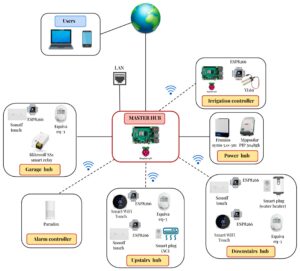What is a Smart Home Controller?
Smart Home Controller
Smart home systems let homeowners remotely control and automate their lights, appliances, door locks, security system and more. Using an integrated hub that’s connected to the homeowner’s Wi-Fi, smart devices communicate with each other through sensors and respond to users’ commands via voice, touchscreen or mobile app. They also use data to automatically adjust settings for efficiency, comfort and safety.
Depending on the size of the network and number of smart devices, it can cost anywhere from a few hundred dollars to thousands of dollars to install an entire smart home system. However, the long-term savings on energy bills, improved safety and convenience more than pay for the initial investment in many cases.

While some smart home controller are built with proprietary technology from specific manufacturers, a smart home controller works with any device that uses a standard communication protocol, such as Wi-Fi, Z-Wave or Zigbee. This allows for interoperability between technologies and gives homeowners a lot of choice when selecting products, services and apps.
What is a Smart Home Controller?
A smart home controller acts as the hub of a smart home, connecting all products to one central system and giving them a common language. This lets the user control devices with a single app, without having to manage different systems from multiple vendors or platforms. The controller is typically installed in the house and connects to a home network over LAN (ethernet) or Wi-Fi. The user can access the smart home system over a smartphone, tablet, computer or web browser, either locally via the Wi-Fi, remote over the Internet or through the local Ethernet connection at their home office or vacation property.
For a more personalized experience, some smart home controllers support a variety of intelligent voice assistants. These digital assistants can take commands, field questions, organize your calendar, schedule conference calls and provide alerts. They can also integrate with other smart devices to perform tasks, such as locking doors, turning on the lights or playing music.
Smart devices can be used to create custom experiences, such as adjusting the temperature before your family arrives so that the home is comfortable and setting the lighting for a party. They can also be set to work according to a timer or even by simply designating a trigger word, such as “party”.
A smart home is not only more convenient to live in, but it’s also safer and more secure. Many smart home devices are designed to automatically turn off or dim lights if someone leaves the room, send notifications of alarms and fires, monitor movement and more. In addition, they can help conserve energy by enabling smart thermostats to learn how the homeowners use their home and automatically modify settings for maximum efficiency and comfort. Some smart devices are equipped with motion sensor detectors that can be armed or disarmed from a phone and can even detect when a child or pet is home and automatically unlock the front door for them. Other smart home devices include automated garage-door openers and locks, smart light bulbs and switches, and smart plugs that automate fans, curling irons, lamps, slow cookers and other appliances.

